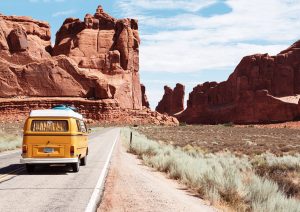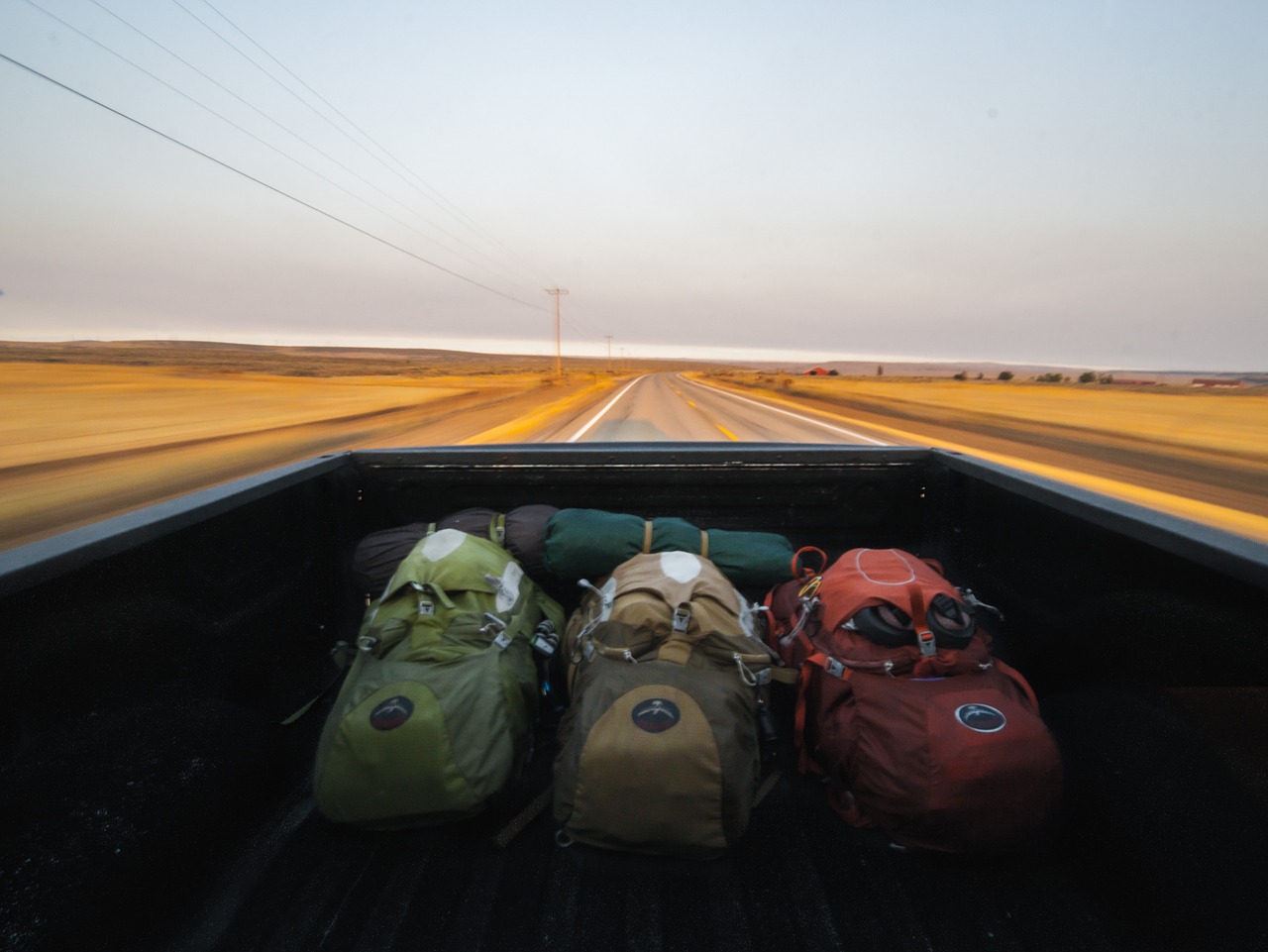Travel long enough, and you will break down. Whether it’s because you locked yourself out, ran out of gas, or your alternator craps out at the most inopportune time. Close to civilization, help is likely just a phone call away. But, what if you’re stranded in the desert, miles from anywhere? Here’s a primer on how to survive a road trip breakdown in the middle of the desert.

Expect the Unexpected
Smartphones have made us complacent. It’s easy to feel like there’s nowhere we can’t go without being just a phone call away from civilization. While that’s mostly true, don’t go out completely unprepared. Especially for shorter trips — say, a few days in Joshua Tree — it’s easy to assume you won’t need much. No matter the length of your trip, pack a legit emergency kit and pray you never need it. We probably don’t need to tell you this should include tire-changing equipment, a compact, all-in-one first aid kit, and, of course, plenty of water. Which brings us to …
Hydration Above All Else
At a minimum, you should be packing a gallon of water per person per day for a trip in the desert. From the comfort of your air-conditioned vehicle, that may seem excessive. But, when you break down, and temperatures quickly soar into the triple digits inside your car and out, you’re going to need to hydrate fast. Remember you can survive a few weeks without food, but you won’t last more than a few days without water. We’re also fond of these dissolvable tabs from nuun that provide electrolytes and other essential nutrients whenever you need them.

Pack for the Cold
Even seasoned road-trippers underestimate just how cold nights in the desert can be. When daily highs top out north of 100 degrees, it’s hard to imagine nighttime temps can drop below freezing. While this might not be a problem for quick trips through the sands, it can be downright deadly if you’re stuck in your car for days on end. Pack plenty of layers including a pair of warm pants, several layerable tops, a hat, gloves, and, even better, a blanket or sleeping bag.
If you’re lucky, you’re going to remember to pack your towing leads along with your jump kit. Being stuck in the desert is hard enough, but if you do see someone come past you, they’ll be able to give you a jump start and you can be on your way. Desert nights can be freezing, and remembering your sleeping bag will keep you cosy and comfortable even on a long, cold night. You want to be ready in case someone does happen to drive past you, and towing leads will help you to get out of a sticky spot!
Keep Your Family/Friends in the Loop
Don’t let pride get the best of you. Backcountry hikers know that it’s critical to tell at least one other person where you’re going and for how long. Send your closest friend or your parents a map of where you plan to be. If they don’t hear from you by a specific day and time, they should know something’s wrong.
Pull the Ripcord
Of course, just because technology can fail doesn’t mean it can’t be useful or even life-saving. Without proper cell coverage, smartphones aren’t a reliable means of rescue in more remote areas. But, modern SOS beacons rely on GPS technology that works anywhere on the planet. They’re designed as a last-ditch effort when all is lost, when you’ve exhausted all other options, and it’s clear you need help. The most straightforward variations are designed as push-button “ripcords” that send an SOS call to whomever you’ve predetermined as your emergency contact. More elaborate models like the SPOT Gen3 Satellite Messenger allow for basic two-way communication so you can share details of your situation with family, friends, or a search-and-rescue team.


